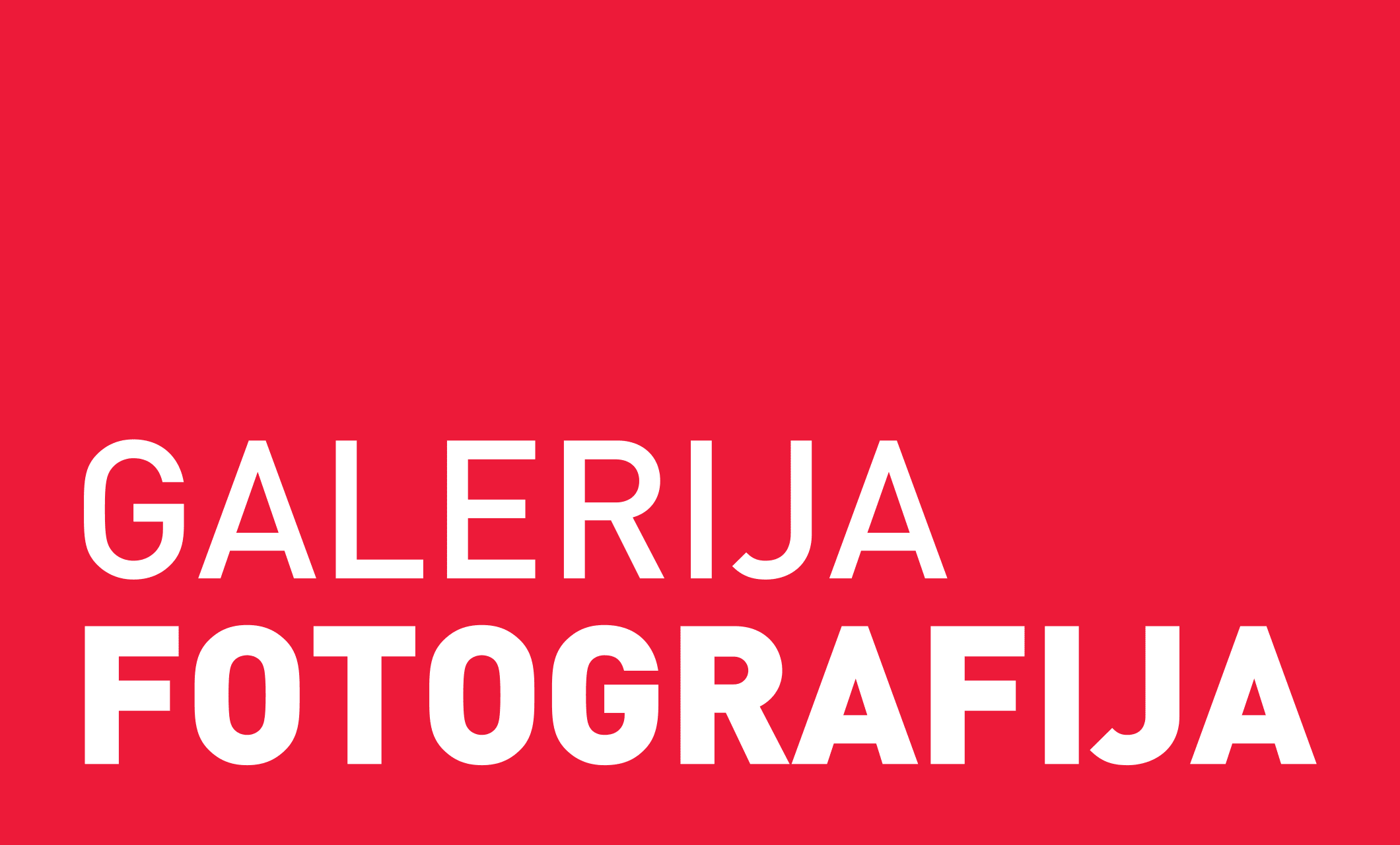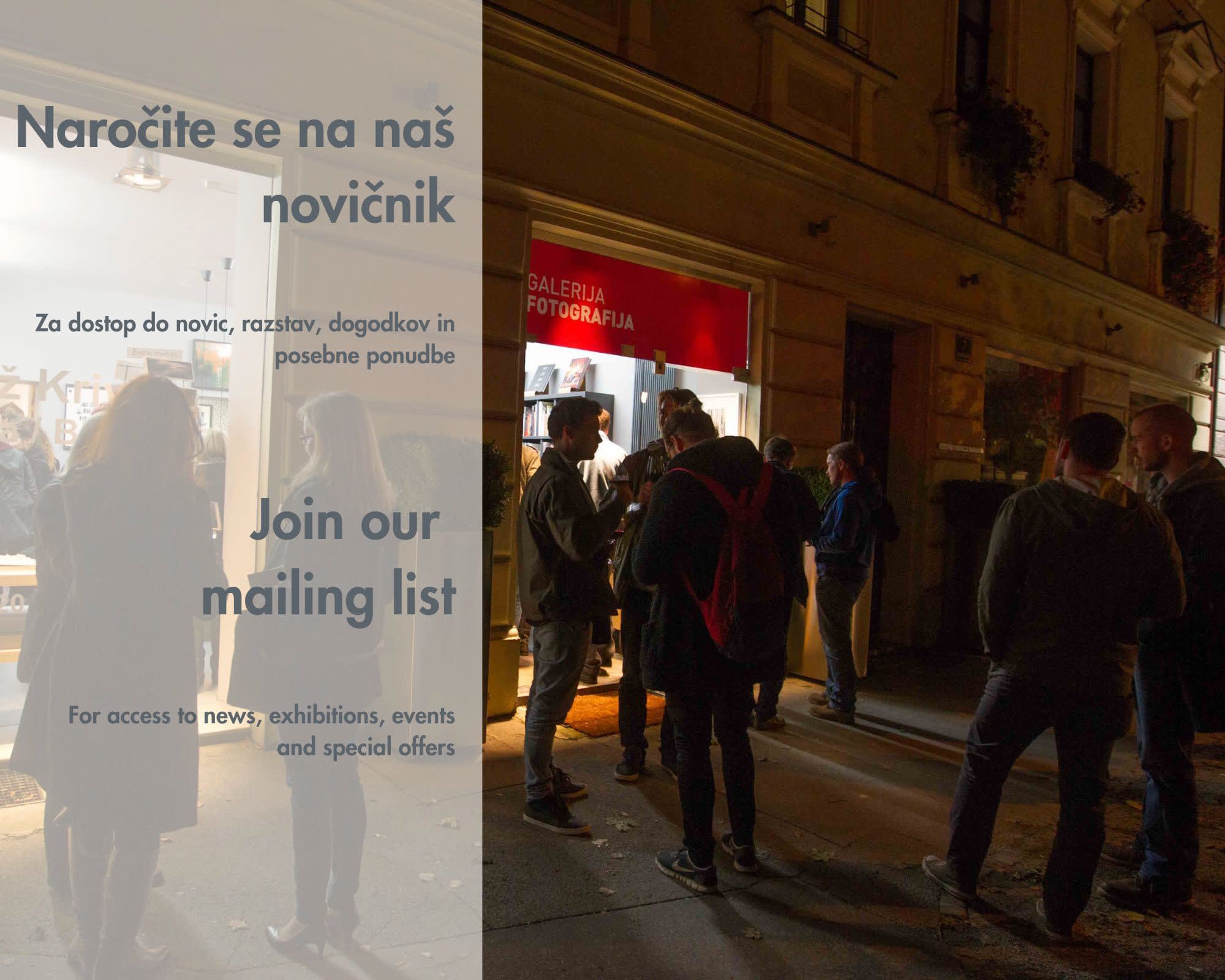Igor Andjelić: Cinecittà
Igor Andjelić is a visual artist, graphic designer and photographer, who is an indispensable part of Ljubljana’s cultural scene. He is an integral part of his home town, and the key co-founder of some of Ljubljana’s culture spaces – Galerija ŠKUC, Klub K4, Salon Minimal amongst them. Most recently, he proved his devotion to the city in an exhibition Ljubljɐna. Through his photographic narratives he weaves a vibrant tapestry of his hometown, which comes to life only through its inhabitants. And it is this topic of showing authentic people, their everyday lives and sincere interactions between them that links Andjelić to Italian neorealism – a period in Western art history most notable for focussing on the common man.
A closer examination of Andjelić’s past projects speaks volumes of the fact that neorealism is a constant source of inspiration, through film, photography and architecture alike. In his photographic series Casa Come Me, he drew inspiration from Malaparte’s famous home, the architectural masterpiece of Capri island, which is recognized as one of the greatest triumphs of Italian functionalism. With its minimalistic design and an enigmatic past, it has stirred inspiration in artists ranging from Jean Luc Godard to Karl Lagerfeld. Andjelić has dedicated his recent series Happy End / Bicycless to Vittorio De Sica and his masterpiece Bicycle Thieves. He intervenes in famous stills from the film – in one, he takes away the image of the bicycle, in the other, of the bicycle thief. But it is the newest series of moving images, entitled Cinecittà, which perhaps most wholly encompasses the author's commitment to this fascinating era of Italian creativity.
Neorealism reached the summit in film and photography in the 1950s. The movement broke off with the previous era of cinematic »realism«, by shifting the focus to genuine people, their everyday lives and their experience of post-war society. Film, whose main function in the early years of the Cinecittà studios was the idealisation and affirmation of Mussolini’s fascist regime, took on a different stance after Italy’s capitulation in 1943. In 1946, when Roberto Rosselini’s Roma, Città Aperta won the grand prix at the film festival in Cannes, Italian neorealism has secured itself a place in popular film culture and art history in general. Directors such as Rosselini, Visconti and De Sica tackled, without embellishments, the difficult topic of post-war crisis and the suffering of the Italian people in a time when unemployment rate was the highest in history. [1]
The connection between neorealist film and Andjelić’s photographic work is perhaps best observed in films by De Sica. The photographer literally invokes De Sica’s masterpiece in the series Happy End / Bicycless, and calls attention to the fact that our society is again in a state of crisis, the people in an ideological and economic distress. As for his newest series Cinecittà, a parallel could be observed in De Sica’s film Umberto D., which follows the daily struggles of an impoverished elderly man. In the company of his small dog, he attempts to make ends meet in the fast-changing city, which seemingly has no room for him. The film, however, is not only representative of the era because it employs the general neorealist topics of poverty, post-war ideological confusion and a horrifying gap between generations, but because it depicts the issues with incredible warmth and empathy. Andjelić tries to implement the same approach in his newest work, where he manages to wholly capture the neorealist spirit, whose focus lies precisely on the people and their actual experiences, on subtle movements, hidden glances and fleeting smiles. Andjelić’s love for his hometown is obvious, almost palpable in his work, and his protagonists are presented in a De Sican manner of warmth and vulnerability. He follows them around the city, as a friend, observer or passer-by, and documents their interactions in an almost »stalker-like« manner, suggested already by Cesare Zavattini, the theoretical founding father of Italian neorealism.
Neorealist film, whose aim was depicting real, non-idealised images of the Italian nation, often chose non-professional actors as its protagonists, who could convey its ideas more authentically. We meet random citizens of Ljubljana in Andjelić’s work as well, appearing almost as film characters due to the movement of images and subject matter. But his portraits also include those of central figures of the Slovenian literary and cultural sphere. This speaks of Andjelić’s integration in Ljubljana’s art scene, as well as of the photographer himself as one of its essential creative parts.
Andjelić’s final nod to neorealist film is of a technical nature. By using moving, black-and white images, he is paying a tribute to the very medium of film, while at the same time offering a wider perspective on what is depicted. He steps out of the frames of the medium of photography and decides to depict more than a single captured moment. The viewer of the work no longer guesses what might’ve happened before or after the Bressonian »decisive moment«. Instead, they are faced with a wider narrative. The photographer does not try to capture a unique, frozen image – he is more interested in swift gestures, shy retreats of the gaze, quiet moments of the human psyche. For these to be represented, movements and gestures are crucial. The background of his works is almost always Ljubljana, but his real interest lies in its inhabitants. As Andjelić mentioned, a little distractedly, while discussing his work: »the city is the people«. And neorealism lives on.
Hana Čeferin
[1] More on the period in: Neorealismo. La nuova immagine in Italia. 1932–1960 (ed. Enrica Viganò), Milano 2006.




